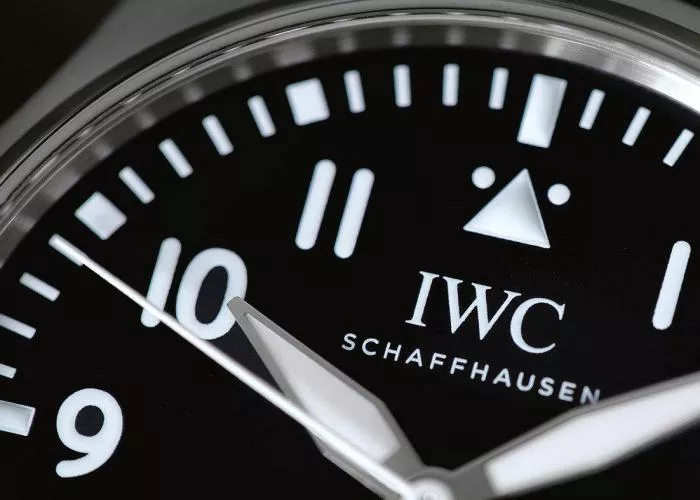For decades, IWC Schaffhausen has been synonymous with aviation timepieces, crafting functional yet iconic watches since the 1940s. Originally designed for military pilots, these models prioritized legibility—day or night—a trait that later captivated civilian collectors.
Two historic pieces laid the foundation: the Big Pilot’s Watch (1940, German Air Force) and the Mark 11 (1948, British Royal Air Force). While the Big Pilot faded post-WWII until its 2002 revival, the Mark 11’s lineage thrived, remaining a collector favorite even after production ceased in 1981. The Mark series re-emerged in 1994 as the Mark XII, solidifying IWC’s reputation in pilot’s watches and sparking a wave of innovations, including the UTC (1998), Spitfire (2003), and Top Gun (2007). Today, the Pilot’s Watch collection stands as one of IWC’s most successful lines.
The Mark XX vs. Mark XVIII: Subtle Upgrades, Significant Improvements
At first glance, the Mark XX and Mark XVIII share striking similarities—40mm cases, unchanged typography, and familiar hand shapes. Yet, three nuanced refinements set the XX apart:
Rhodium-Plated Hands: Replacing black hands, they enhance reflectivity and elevate the dial’s sophistication.
Longer Hour Markers: The 3, 6, 9, and 12 indices now mirror historic models, correcting the XVIII’s deviation.
White Date Disk: A return to the Mark XII/XV aesthetic, improving contrast and readability.
The most transformative upgrades lie beneath the surface. The Mark XX debuts Caliber 32111, a Richemont-group movement (shared with Baume & Mercier and Panerai) boasting a 120-hour power reserve—a leap from the ETA-based 30110’s 42 hours. Though not a true in-house caliber, its precision (losing just ~1 second/day in testing) and quick-date adjustment justify the upgrade.
Practical improvements include:
EasX-Change System: Borrowed from the 2021 Big Pilot 43, it enables tool-free strap swaps.
Enhanced Durability: Water resistance jumps to 100 meters (from 60).
Honoring the Mark 11’s DNA
The Mark 11 set the standard with its no-nonsense design: a clean steel case, legible black dial, luminous markers, and a glove-friendly crown. These elements persist through every successor, including the XX. Notably, IWC skipped “unlucky” numbers (13, 14, 19) in the series, maintaining continuity without superstition.
Convergence with the Big Pilot
While the Mark XX and Big Pilot share distinct origins, their designs now overlap more than ever. The 2006 Mark XVI adopted the Big Pilot’s lance hands and elongated numerals, and the XX further aligns with rhodium plating and EasX-Change. Key differences remain:
Size: 40mm (XX) vs. 43mm (Big Pilot 43).
Movement: The Big Pilot houses IWC’s in-house caliber; the XX uses a Richemont group movement.
Price: At 8,950 Big Pilot significantly.
Design and Craftsmanship
The Mark XX’s 40mm case strikes a balance—modern yet wearable. Its dial, though minimalist, exudes luxury through polished hands, glossy bezels, and meticulously applied Super-LumiNova. A soft-iron inner cage ensures anti-magnetism, while the solid caseback (engraved with a Ju-52) hides a movement adorned with circular graining and Geneva waves.
New color options—blue dial/blue strap and green dial/brown strap—echo the Big Pilot’s palette, broadening its versatility.
Conclusion
The Mark XX represents IWC’s mastery of incremental refinement. It honors its tool-watch roots while embracing contemporary demands, making it the most advanced Mark yet. However, IWC must tread carefully: further convergence with the Big Pilot or excessive commercialization via colors risks diluting each model’s identity. For now, the XX stands as a testament to aviation horology’s timeless appeal.


